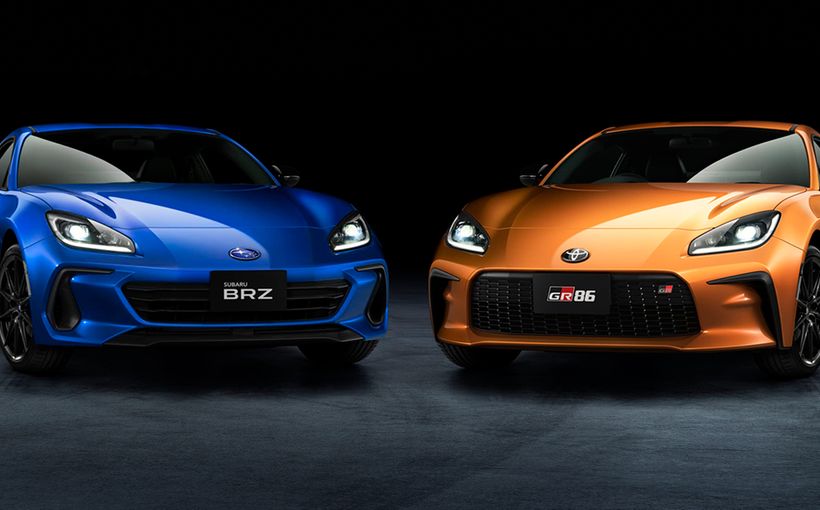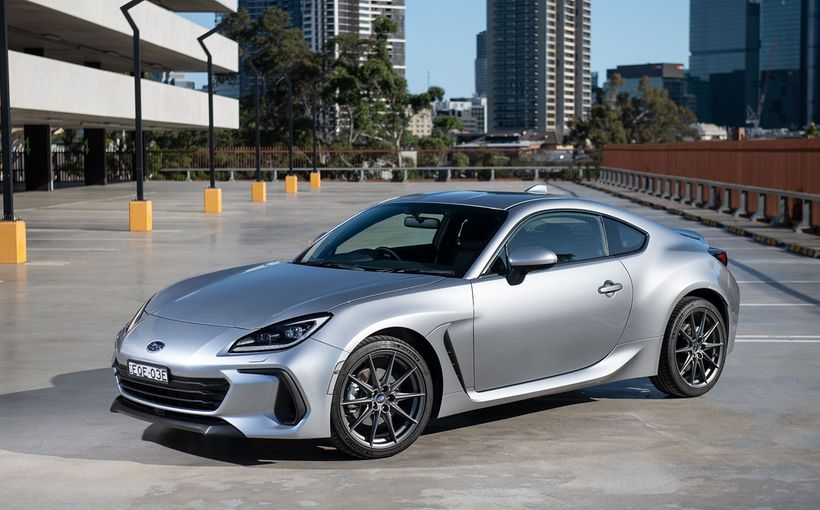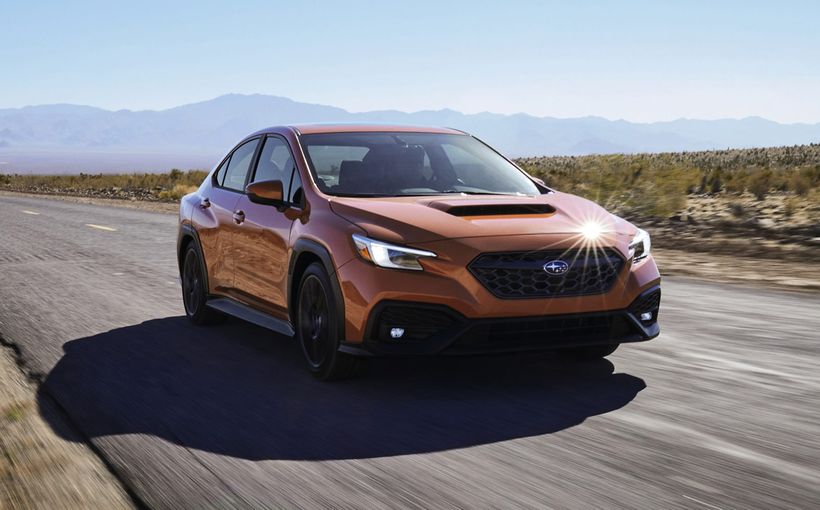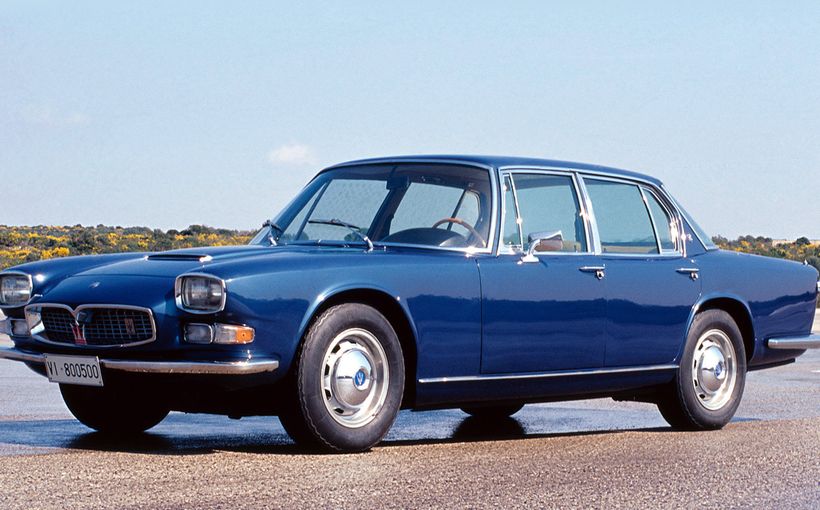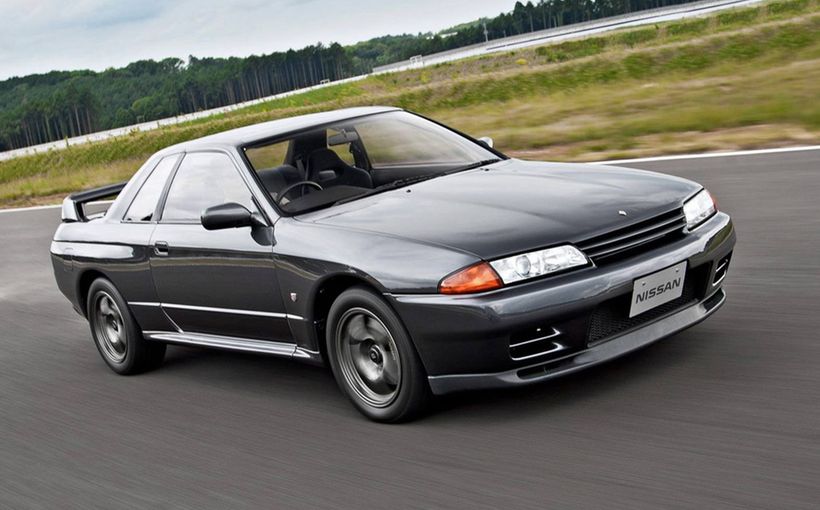Subaru Impreza WRX: All-wheel drive turbo vanquishes V8 heavyweights

Enzo Ferrari famously said: when you buy a Ferrari, you pay for the engine; the rest you get for nothing. With the first Subaru Impreza WRX, it did rather seem as if you paid for the mechanicals and got the styling and interior free.
Even in early 1994 this new Subaru looked boring. Sure it had alloys, but they were undistinguished little 15-inch items. And its interior, apart from a gorgeous Nardi leather-rimmed wheel felt cheap. I thought the seats were trimmed in the kind of hessian-like material you’d expect to see on camping chairs in an army disposals store. The carpet was the cheapest imaginable.

Just sometimes though, first impressions are not the only impressions!
It took me just five seconds of motion to realise this was the most astonishing new car I had experienced in my more than a dozen years as a motoring journalist. The lump in the middle of the bonnet may have given me a clue and the Nardi wheel suggested serious purpose, but nothing prepared me for the sheer grunt of this generally unassuming looking little Japanese car, distinguished externally mainly by the bonnet scoop.
At the time I had just spent a week with the Mitsubishi Lancer GSR, another all-wheel drive turbocharged compact sedan. I felt sorry for the marketing team at Mitsubishi Australia because their car was immediately overshadowed. Where the GSR felt quick, the WRX felt like a supercar; where the Mitsu had a light and tinny character, the Subey might as well have been hewn from a billet; one seemed almost like a toy, the other was a serious weapon, something like a Nissan GTR at much less than half the price. Indeed, the Lancer GSR, which had made its local debut – unchallenged - in November 1992 was quietly dropped in mid-1996 (although numerous Evolution variants would follow), by which time the WRX was already a cult car. There was notoriety, too, because the WRX was soon the ram-raid car of choice.
My introduction came just a month or so before the 1994 Targa Tasmania. The WRX could leave my well-worked 105-Series Alfa GTV 2000 (with spare tank full of methyl benzine in the boot) for dead.

Then, in late 1997 I went to work at MOTOR magazine, with its newfound emphasis on performance cars. New HSVs were regular fare. Poor old John Crennan, the managing director, and his team must have hated it whenever a magazine story put an HSV up against a WRX, any WRX. In the final years of last century, it was rare for even the hottest HSV (think, for example, of the custard-coloured GTS-R of 1996) to put in a sub-15 second standing 400-metre time but the $40K Subaru could do 14.6s all day long. And then came the STI, but I’m getting ahead of the story.
I have no hesitation in nominating the Subaru Impreza WRX as the most important new car of the 1990s. It redefined the compact sports sedan. Other cars had turbochargers, some had all-wheel drive, a few had horizontally opposed engines. But Subaru combined all three features in a remarkably stiff body and, thanks largely to the ‘flat’ engine, a very low centre of gravity.
The Liberty (known in other markets as the Legacy) had the same characteristics, but it had been developed before Fuji Heavy Industries had committed itself to competing in the World Rally Championship (beginning in season 1991). Elements of the production Impreza – notably the wheel arches and the design of the bonnet – reflect the demands of the sport. The Impreza boasted a remarkably stiff body, which contributed to the car’s fantastically solid feeling on the road; it only felt like a small car when it came to dispatching winding roads in short order or fitting into a parking space.

WRX aficionados know their cars by model year (MY). So the first one sold in Australia was the MY94 and it went on sale in February 1994, priced at $39,990. It came as a sedan or hatch (really a wagon), both at the same price: an astonishing bargain. These were highly practical cars with 60:40 split rear seat. The hatch had an enormous load capacity and the sedan’s boot was huge for the exterior size of the vehicle.
The 2.0-litre quad-overhead camshaft 16-valve horizontally opposed four made 155kW at 6000rpm. Equally importantly, peak torque was a huge 270Nm but delivered quite high in the rpm range at 4800. So the first WRX was distinctly peaky in performance with very obvious turbo lag and, frankly, I think this characteristic appealed a to a majority of owners. For a while, it almost seemed compulsory to wear your cap backwards if you drove a Rex!
Interestingly, the factory quoted a top speed of 225km/h for the hatch and 230 for the sedan, which could only be due to the latter’s superior coefficient of drag.
There were viscous limited slip differentials in the centre and at the rear. Torque was distributed 50:50 to each pair of driving wheels, except when wheelspin occurred. In practice, the WRX always felt front-drive biased, even though it could be coaxed into oversteer under some circumstances (usually on a racetrack).

There were viscous limited slip differentials in the centre and at the rear. Torque was distributed 50:50 to each pair of driving wheels, except when wheelspin occurred. In practice, the WRX always felt front-drive biased, even though it could be coaxed into oversteer under some circumstances (usually on a racetrack).
The MY95 WRX, launched just nine months later, was barely changed, although two new colours were offered. A new shade of red (Bright Red) replaced the original and dark metallic green proved very popular. In the Impreza WRX’s first three-quarters of a year on the local market, 325 sedans and 213 hatches had found homes.
It would not be until MY97 that serious changes applied to the standard Impreza WRX but by the time this one was launched, Subaru Australia had already broadened the car’s appeal. The first special limited edition was offered as part of the MY96 range. This was the WRX Rallye. It was available as a sedan only and its paintwork was Prodrive Blue. Buyers paid an extra $2K. The soon-to-be-trademark STI gold wheels were fitted. Inside, it got what Subaru quaintly called Extreme Sports Seats and these would be standardised across the range the following year. Doorhandles and mirrors were colour-keyed. Only 121 WRX Rallyes were imported.

The MY97 version gave me my second drive in a WRX. This one was far more impressive, largely because of improved aesthetics. There was a new, squarer bonnet with larger extraction vents and a crisper grille. The so-called Extreme Sports Seats were tastefully trimmed in a high-grade cloth – very dark blue with red highlights. These proved less comfortable on a long drive than around a circuit, but they looked great. So did the new white-faced instruments set into a redesigned dashboard. In summary, the interior no longer felt low-rent. Prodrive Blue became a fixture on the colour chart.
A new mauve-blue colour called Reddish Blue proved popular.
I remember settling into this car for a drive on a road loop in the vicinity of Phillip Island where the track testing would be done by Cameron McConville. It was immediate love. I described the colour as Heart Attack Red and it was such a feeling to look down the bitumen with that huge bonnet scoop in the foreground. That was when I knew I would have to buy one for myself. It took almost three years.
Precisely because of the WRX’s popularity with thieves, Subaru Australia began to fit an infuriating immobiliser which required the keying in of a number every time you wanted to start the engine. Of course, notwithstanding this precaution, cars still got stolen but culprits generally needed a truck for removal of this hot automotive property!
But the most important change for the 1997 Rex was beneath the bonnet. A smaller turbocharger which spooled up more quickly meant peak power came in earlier and maximum torque very much earlier. While the early models had been hard to get off the line smoothly and quickly without torturing the drivetrain, the MY97 car was much more user-friendly. Any early WRX was quicker than V8 Falcons, Commodores or even HSVs through the standing 400 metres, but the uninitiated driver taking off at a green traffic light might have found this difficult to believe: the Subaru’s high performance was more difficult to access than a Falcon XR8’s.
So, the MY97 cars were much more driveable. On previous models the peak power of 155kW came in at 6000rpm. The same power was still available but it now arrived at 5600. Torque was increased by 20Nm but this peak hit at 4000rpm rather than 4800 (by which time the aforementioned uninitiated driver had already changed up to the next gear!). A new, larger intercooler and revised wastegate completed the underbonnet upgrade.
For the first time the WRX was offered with (four-speed) automatic transmission to further broaden its appeal, although not for true enthusiasts. And no fewer than three Special Editions were offered during the MY97’s model life. A total of 1446 MY97 cars were sold in Australia, including 367 Special Editions.

In 1998 and keen to make John Crennan’s life unhappier came the two-door STI variant with its claimed 206kW of power at 6500rpm. At modest speeds, the STI felt little quicker than the torquey standard car, but give that tachometer needle a big swing and you could understand Subaru’s claimed zero to 100 time of 4.9 seconds. The WRX took 6.3. To put both figures in perspective, consider that the 1992-95 BMW E36 M3 took 6.0. All WRXs had a forged crankshaft; the STI also scored forged pistons. It was imperative to run this engine on 98-RON fuel or risk destroying it in a moment’s careless joy.
The MY98 finally got 16-inch alloys but this was the only significant change to the standard WRX. Almost 3000 MY98 cars were sold. Despite high insurance premiums, enthusiasts just loved this brilliant little car, which had rewritten the rules of high performance.

A deeper front spoiler, larger central air intake and new headlights announced the arrival of the MY99 WRX in your rear-view mirror. Peak power was now 160kW. For the first time, the STI could now be specified as a four-door sedan and became a regular model. Dual airbags were fitted to all cars. As for the lovely Nardi wheel, it had been replaced by an air-bagged Momo some years earlier. The sales tally was 4896.
Last of the original series was the MY00, which went on sale in August 1999, and I have had the enormous pleasure of owning two of these, the first in the Mica Red introduced for that series and the second one, in which my friend Geoffrey Corah and I won our class first in the 2010 Targa Tasmania and then in the Targa High Country later the same year, was the silver car shown here with the later model STI gold alloys.

No wonder, the MY00 is most enthusiasts’ favourite early WRX, even though it was outsold by the MY99 car. It acquired a neater set of alloys (still 16s) and the colour-keying of doorhandles and mirrors really tidied up the appearance. It is an absolute classic and surely destined one day to be highly collectible. Especially memorable is the pale yellow MY00 Clubspec with black alloys, of which just 100 were made available to Australian buyers, 50 sedans and 50 hatches. Oddly, while the sedans got colour-keyed yellow seats, the hatches made do with the dark blue and black trim used in all WRXs since the launch of the MY97.
In summary, there is a great case to be made that the first series WRX is the most desirable of all, seen in the context of its place in history. HSV finally got a 300kW car for 2000 and no longer had to trail a standard WRX through the standing 400 metres, but for its first six years in Australia the little Subey was the unchallenged giantkiller. It has proved more and more difficult with each successive generation of WRX to retain the car’s unique edge as maximum power figures escalate. In a direct comparison between an STi and a Civic Type R in 2008, I preferred the Honda. Curiously, this was down to dynamics and appearance, not performance.
There were always some who would question the premium price of the STI variants, even though they were always ludicrously cheaper than a BMW M3. But in 1999 it was abundantly apparent that no car of anywhere near the price could outclass a standard MY00 WRX. If the same had been true since 1994, the real difference was that the car no longer presented as a bargain basement special but as a mature sports sedan: the Subaru marque was defined forever!






